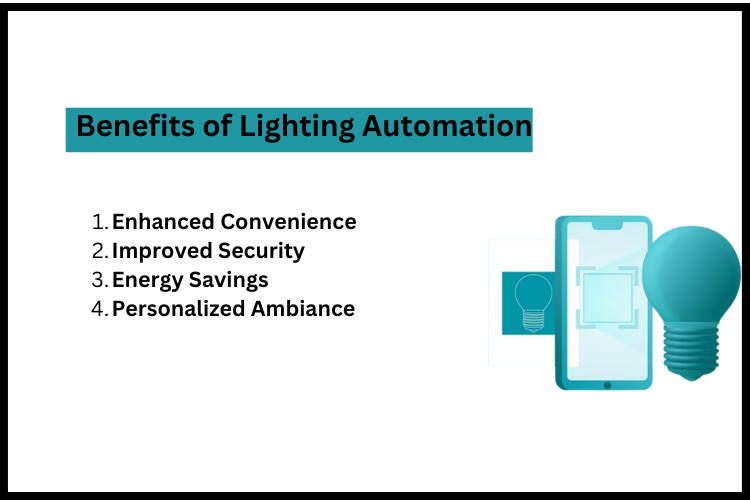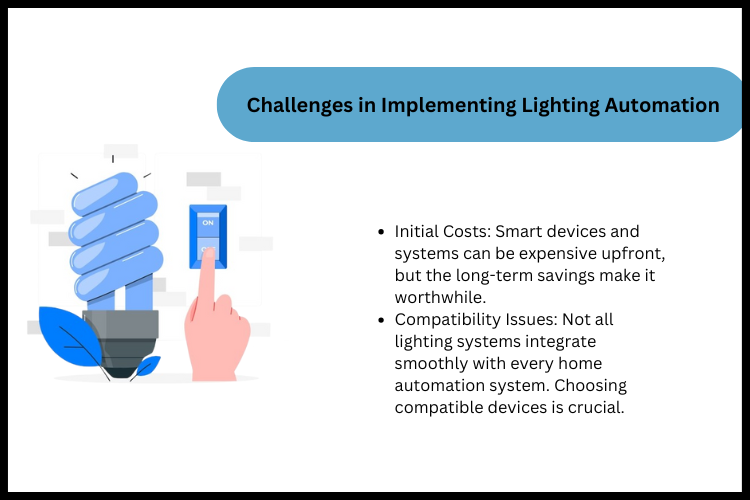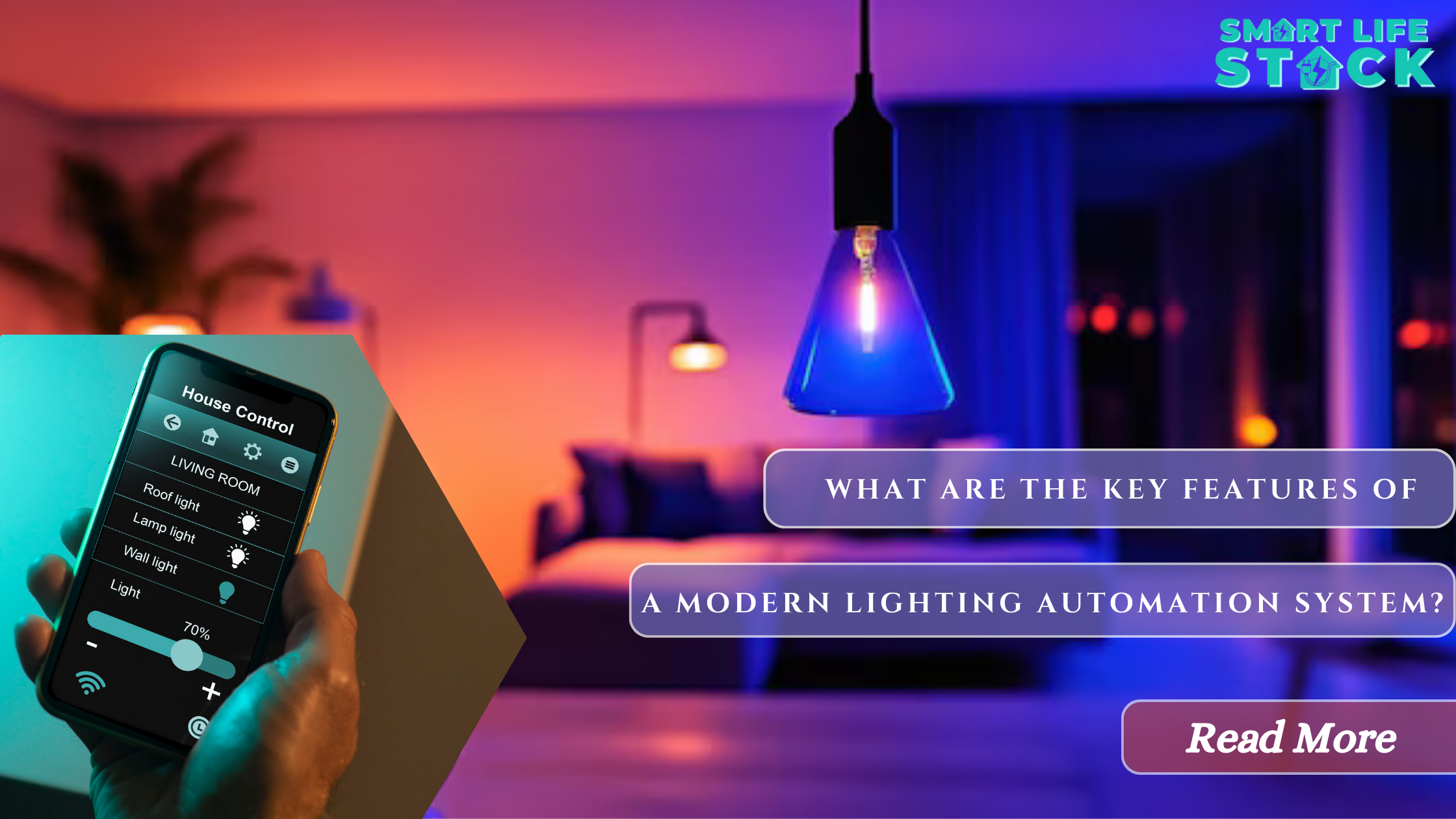Introduction
Imagine walking into your home, and the lights automatically brightening to create a warm ambiance. Lighting automation is no longer a futuristic dream; it’s a reality that integrates seamlessly with a modern home automation system. Whether you want to enhance comfort, improve energy efficiency, or set the perfect mood, lighting automation offers endless possibilities. Let’s explore how lighting automation works and why it’s an essential part of a smartifestack.
What Is Lighting Automation?
Lighting automation is the use of smart technology to control and manage lighting systems. This technology allows users to automate lighting schedules, adjust brightness, and even control lights remotely. When paired with a home automation system, lighting automation becomes a key component in creating a connected and intelligent living space.
Key Features of Lighting Automation
- Remote Control: Control your lights from anywhere using a smartphone app.
- Energy Efficiency: Automate lights to turn off when not in use, saving energy and reducing bills.
- Customization: Adjust brightness and color to suit your preferences or activities.
- Integration: Works seamlessly with other devices in your home automation system.
How Lighting Automation Works
Lighting automation operates using smart devices such as sensors, dimmers, and smart switches. These devices communicate with a central home automation system, allowing you to control and schedule lighting via mobile apps, voice commands, or pre-set routines. For example, motion sensors can detect movement and automatically turn on lights in specific areas.
Benefits of Lighting Automation
- Enhanced Convenience: Automate lights to turn on when you enter a room or dim during movie nights.
- Improved Security: Simulate occupancy by scheduling lights to turn on and off while you’re away.
- Energy Savings: Reduce electricity usage by setting lights to turn off when not needed.
- Personalized Ambiance: Create the perfect mood with customizable lighting options.

Types of Lighting Automation Systems
- Smart Bulbs: Easily replace regular bulbs with smart ones that connect to your home automation system.
- Smart Switches: Control your existing lights without changing the fixtures.
- Motion-Sensor Lights: Automatically turn on lights in response to movement.
- Color-Changing Lights: Add vibrant hues to your home with RGB lighting options.
Integration with a Home Automation System
When integrated with a home automation system, lighting automation becomes even more powerful. You can sync lights with other smart devices like thermostats, security cameras, and voice assistants. For instance, you can program your lights to dim when the TV turns on, creating a home theater experience. This seamless integration enhances your lifestyle and makes your home truly smart.
Lighting Automation for Energy Efficiency
Did you know that lighting automation can significantly reduce your energy consumption? By using smart sensors and timers, lights can automatically switch off when no one is in the room. Additionally, smart dimmers adjust brightness based on natural light levels, ensuring optimal energy usage. This not only benefits the environment but also reduces your electricity bills.
Smart Lighting for Enhanced Security
Lighting automation isn’t just about convenience—it’s also a powerful security feature. Smart lighting allows for random light to turn on and off during absence, creating the illusion of home presence. Combined with your home automation system, this deters potential intruders and provides peace of mind.
Voice Control with Lighting Automation
Voice control takes lighting automation to the next level. By integrating your lighting system with voice assistants like Alexa, Google Assistant, or Siri, you can control your lights with simple voice commands. For example, say, “Alexa, turn off the bedroom lights,” and let the technology do the rest.
The Role of Artificial Intelligence in Lighting Automation
Artificial intelligence (AI) is revolutionizing lighting automation. AI-powered systems learn your routines and preferences to provide personalized lighting solutions. For instance, your system might automatically adjust the brightness during the day and switch to warmer tones in the evening.
Lighting Automation for Different Rooms
- Living Room: Utilize smart lighting in the living room to create a comfortable atmosphere for movie nights or parties.
- Kitchen: Ensure bright, focused lighting for cooking tasks.
- Bedroom: Create a relaxing ambiance with dimmed, warm lights.
- Outdoor Areas: Use motion-sensor lights to enhance safety and highlight landscaping features.

Challenges in Implementing Lighting Automation
While lighting automation offers many benefits, there are some challenges to consider.
- Initial Costs: Smart devices and systems can be expensive upfront, but the long-term savings make it worthwhile.
- Compatibility Issues: Not all lighting systems integrate smoothly with every home automation system. Choosing compatible devices is crucial.
Future Trends in Lighting Automation
The future of lighting automation includes innovations like circadian lighting, which mimics natural sunlight to support your biological rhythms. Smart lighting systems will also become more intuitive, using AI to adapt to your lifestyle and preferences.
Contact us
OTP Sent On WhatsApp
Why Choose Smartlifestack for Lighting Automation
Smartlifestack is a leader in providing cutting-edge lighting automation solutions. With years of experience in the home automation system industry, we offer tailored solutions to suit your specific needs. Whether it’s for a single room or an entire home, our team ensures seamless integration and top-notch performance.
Conclusion
Lighting automation is a key component of a modern home automation system. It enhances convenience, improves security, and saves energy, making your home smarter and more efficient. With customizable options and advanced technology, lighting automation transforms how you interact with your living spaces. Ready to light up your life? Contact Smartlifestack today for expert solutions.
Challenges in Implementing Entrance Automation
- Cost Considerations: Initial setup can be pricey, but long-term benefits outweigh the investment.
- Technological Barriers: Older homes may require structural adjustments for compatibility.
Future of Entrance Automation
The future is bright, with trends like voice-controlled entrances and blockchain-based security systems. These innovations will further simplify and secure entryways.
Frequantly Asked Questions
Q1.What is lighting automation?
Lighting automation uses smart technology to control and manage lighting systems for convenience and energy efficiency.
Q2.How does lighting automation work with a home automation system?
Lighting systems integrate seamlessly with a home automation system, allowing centralized control via apps or voice assistants.
Q3.Is lighting automation expensive?
While the initial cost can be high, the long-term energy savings and convenience outweigh the investment.
Q4.Can I control lighting automation remotely?
Yes, you can control your lights remotely through a smartphone app or connected devices.
Q5.Why choose Smartlifestack for lighting automation?
Smartlifestack offers tailored solutions, expert support, and seamless integration with your home automation system.


